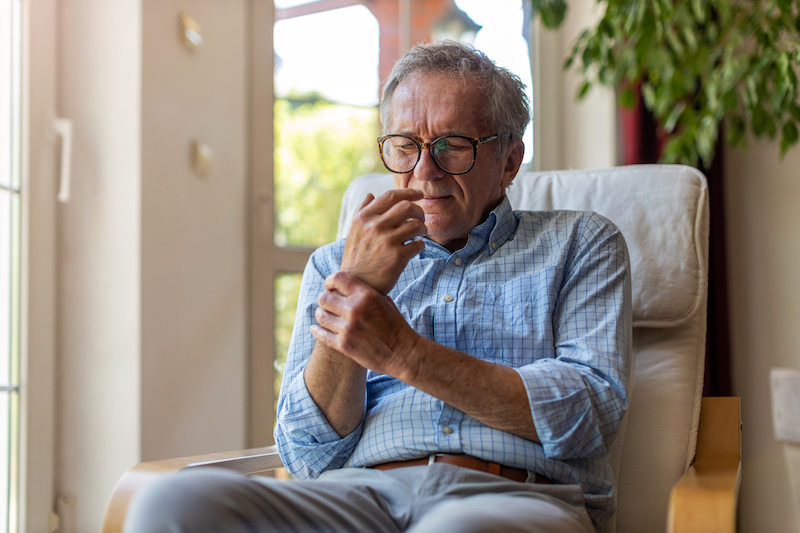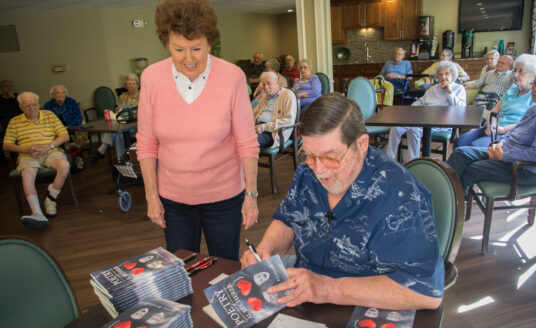While seniors generally experience more physical pain than younger people, you may be able to lessen or eliminate many of these pains by adopting some non-invasive and in most cases inexpensive treatments for chronic pain management.
Common Causes of Senior Pain
Some of the most common causes of chronic pain in seniors are:
- Arthritis
- Degenerative spine disease
- Cancer
- Cardiovascular disease
- Diabetes
- Neurological diseases (Parkinson’s disease, stroke, spinal cord injury)
The Price of Surrendering to Pain
The prevalence of seniors (65 and above) believed to be suffering from chronic pain is between 60-75%.
Add the chronic pain to the existence of stiff joints, thinning of cartilage and the loss of flexibility, and you have a recipe for a potentially vicious debilitating circle: Chronic pain often leads to depression, which can lower the tolerance for pain, which then can increase the level of depression even more!
Complications from untreated pain can include:
Immobility. This can increase the risk of constipation, pneumonia and pressure sores.
Depression and a lack of interest in eating and drinking, which can lead to malnutrition and dehydration.
Disturbed sleep patterns, causing fatigue and a reduced capacity to function during the day.
Physical and emotional suffering.
The Undertreatment of Senior Pain
Pain is complicated. No two people experience it the same way, which can make diagnosing and treating it difficult. This is particularly true for seniors, and may lead to the undertreatment of pain.
Pain assessment by a physician using the Numeric Rating Scale to rate the intensity of pain from zero to 10 can be problematic due to its subjectivity. For example, defining 10 as the worst pain a person has ever had may be misleading if the worst pain the person has ever had is a toothache.
The Faces Pain Scale is effective, associating facial representations of pain levels to assess the intensity of pain. There is also a Verbal Descriptor Scale that includes seven pain descriptors that describe varying degrees of pain severity.
Communicating about pain levels may be especially difficult for seniors living with dementia, who may express their pain through agitation, restlessness, groaning, frowning, staying in one position, avoiding being touched, and depression.
Also, seniors may be dealing with several sources of pain. Add that to the multiple medications a senior may be taking and possible drug interactions, and you can see why treatment is a challenge.
Other barriers to treatment include seniors denying that they are in pain, and therefore not wanting to alarm and worry their loved ones.
Older patients also often handle pain medications differently than younger people. Also, injections may be more difficult due to a decrease in muscle mass, and oral drugs can be absorbed differently because of changes in stomach acid levels. So, as people age, there is a larger variation in their reactions to medications. This is why physicians generally begin with a low dose of a pain medication for seniors, and then increase the dosage in small increments as necessary.
Chronic Pain Management Treatments
Note: It is important for you as a caregiver or family member to consult with your loved one’s physician before administering any additional medications or supplements (even over-the-counter medications) to your senior loved one before first consulting with his or her physician.
Mild to moderate pain can sometimes be temporarily relieved by over-the-counter medications with acetaminophen like Tylenol.
Non-steroidal anti-inflammatory drugs (NSAIDs) are the next step in pain treatment. NSAIDs are also intended for short-term use, and again, should not be taken without talking to a physician. They can cause abdominal pain, diarrhea, constipation, extreme weakness, peptic ulcers and high blood pressure, and affect the heart, liver and kidneys.
Opioids are a class of drugs that include fentanyl, and pain relievers that are available by prescription such as oxycodone (OxyContin), hydrocodone (Vicodin) codeine and many others.
Aside from the addictive power of opioids, they pose specific problems for seniors, including nausea and dizziness, which can lead to an increased rate of falls, as well as liver and kidney damage. Due to the potential for abuse and regulatory requirements, physicians are writing and renewing fewer prescriptions for opioids while recommending other treatment options.
Some experts believe the best way to deal with chronic pain is through a combination of treatments. Options include not only oral medications but topical agents and transdermal patches, acupuncture, exercise, physical therapy, pain specialists and cognitive therapy.
Exercise can not only improve physical function, flexibility and balance, it can reduce isolation and depression, both factors that can increase pain intensity.
Physical therapists provide specific exercise regimens to ease discomfort and reduce reliance on pain medications. Manual physical therapy is a specialized hands-on form of physical therapy that puts pressure on muscle tissue and manipulates joints to decrease pain.
Chronic pain management specialists, who are physicians with special training in evaluating and treating pain, can treat a number of conditions. In accordance, pain management facilities employ specialized technologies like hyperbaric oxygen chambers to promote healing of infections and persistently non-healing wounds.
Cognitive therapy uses mindfulness training to relax the body and mind, and research has indicated it can be effective for relieving both acute and chronic pain.
What You Can Do
It is important to take medications as prescribed, achieve or maintain a healthy weight and, if a physician approves, perform exercises that promote flexibility and mobility.
Encourage your senior to describe his or her pain. Keep a record of its severity and frequency and what you have observed. This will be vital information for a physician to hear. Also encourage your senior to seek treatment for chronic pain management early on.
Help reduce stress and anxiety in the senior’s life. Using humor is another way of improving pain tolerance. Try a few of these potential solutions, and good luck!
| Whether in independent living, assisted living, memory care, or skilled nursing, Bethesda offers the right amenities, services, programming, and staff to make every day full of purpose. See for yourself and tour our independent living communities, including Bethesda Barclay House – Clayton, Bethesda Gardens – Kirkwood, Bethesda Orchard – Webster Groves, Bethesda Terrace – South County, Village North Retirement Community – Florissant, and The Oaks at Bethesda Villas – Kirkwood/Webster. |



